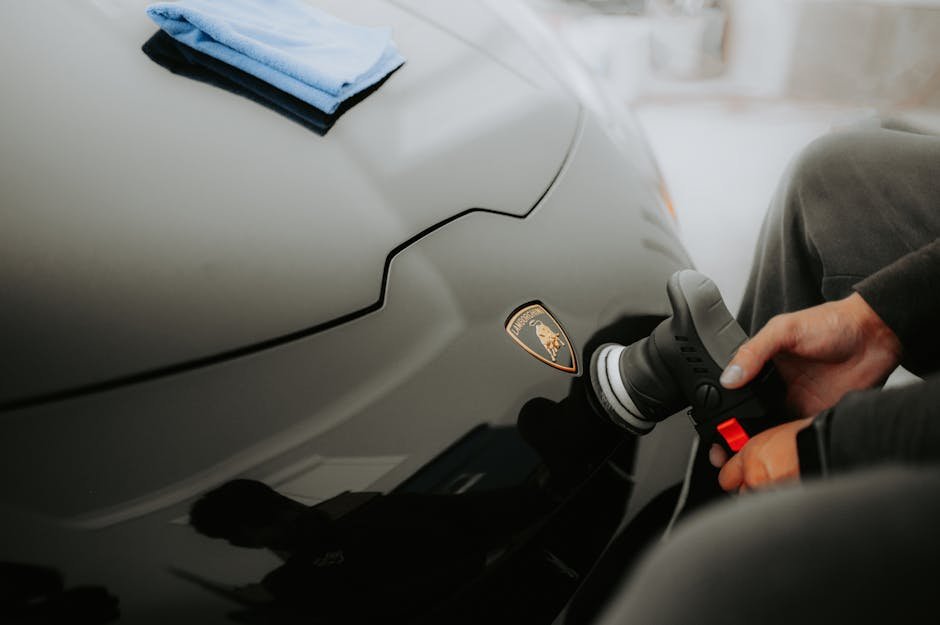Ceramic Coat Car vs. Traditional Wax: What's the Better Choice for Your Vehicle?
Understanding the Benefits of Ceramic Coating
Ceramic coat car enthusiasts often praise this advanced form of protection for its exceptional durability and long-lasting shine. The key aspect of ceramic coating lies in its ability to create a semi-permanent bond with the vehicle's paint, acting as a robust shield against various environmental contaminants.
One of the significant advantages of ceramic coat car applications is their hydrophobic nature. Water beads and slides off the coated surface effortlessly, making washing your vehicle a much easier task. This hydrophobic property also helps in preventing water spots from forming on the car's exterior.
Moreover, ceramic coatings offer superior resistance to UV damage and chemical stains compared to traditional wax. This means that your car's paint will remain protected from sun fading and harsh chemicals encountered on the road, keeping it looking pristine for an extended period.
When considering ceramic coat car treatments, it's essential to note that they can provide a deeper gloss and enhanced color depth to your vehicle's paintwork. This aesthetic enhancement is a key reason why many car owners opt for ceramic coatings despite the initial investment.
The Protective Power of Traditional Wax
On the other hand, traditional wax has long been a go-to choice for car enthusiasts seeking basic protection and a glossy finish for their vehicles. While wax may not offer the same level of durability as ceramic coatings, it still provides a decent shield against light scratches and swirl marks.
One of the primary benefits of traditional wax is its ease of application. Unlike ceramic coatings that require precise application techniques, waxing your car can be a straightforward process that many car owners prefer for its simplicity and accessibility.
Additionally, traditional wax is known for its affordability compared to ceramic coatings. For budget-conscious car owners or those looking for a quick fix, waxing the car remains a popular choice due to its cost-effectiveness and the temporary shine it imparts to the paint.
Durability and Longevity: Ceramic Coat vs. Traditional Wax
The debate between ceramic coat car treatments and traditional wax often centers around durability and longevity. While ceramic coatings can last for years with proper maintenance, traditional wax typically needs to be reapplied more frequently to maintain its protective properties.
In terms of longevity, ceramic coatings have the upper hand as they form a stronger bond with the paint surface, leading to a more resilient protective layer. This means that your car is shielded against environmental factors for an extended period, reducing the need for constant reapplications.
However, traditional wax, despite its shorter lifespan, can still offer decent protection and a glossy finish when applied regularly. For those who enjoy the therapeutic aspect of waxing their car frequently, the shorter lifespan of wax may not be a significant drawback.
Ultimately, the choice between ceramic coat car treatments and traditional wax depends on your priorities regarding long-term protection, maintenance effort, and the desired aesthetic results for your vehicle.
Cost Comparison: Investing in Ceramic Coating or Traditional Waxing
When comparing the cost of investing in ceramic coat car treatments versus traditional waxing, it's essential to consider the long-term benefits each option provides. While ceramic coatings come with a higher initial price tag, their durability and longevity can offset the need for frequent wax reapplications.
On the other hand, traditional wax may seem more economical at first glance, but the cumulative cost of regular reapplications and potential professional detailing services can add up over time. It's crucial to weigh the upfront investment of ceramic coatings against the recurring expenses associated with waxing.
For car owners looking for a cost-effective solution that still offers decent protection and shine, traditional wax may be the preferred choice. However, if you value long-lasting results and are willing to invest in the initial application cost, ceramic coatings can provide a higher level of paint protection and aesthetic enhancement.
Application Process: Ease of Use and Time Efficiency
In terms of the application process, ceramic coat car treatments usually require more precision and expertise compared to traditional waxing. Ceramic coatings need to be applied in controlled environments, with attention to detail to ensure even coverage and proper bonding with the paint surface.
While ceramic coatings may demand a more meticulous application process, the results often justify the effort, offering a sleek and durable protective layer for your vehicle. On the other hand, traditional wax can be applied more casually and doesn't require as much technical skill, making it a popular DIY choice for many car owners.
When it comes to time efficiency, traditional waxing tends to be quicker than ceramic coating applications. Waxing your car can be a weekend DIY project that yields immediate results, whereas ceramic coatings may require professional application and curing time before the vehicle is ready for the road.
Ultimately, the ease of use and time efficiency of traditional wax make it a convenient choice for car owners looking for a quick and satisfying way to protect and beautify their vehicles without the need for specialized tools or professional assistance.
Environmental Impact: Ceramic Coating and Traditional Waxing Solutions
Considering the environmental impact of ceramic coat car treatments and traditional waxing solutions is essential in making an informed choice for your vehicle maintenance routine. Ceramic coatings are known for their eco-friendly properties, as they reduce the need for frequent washes and chemical detergents.
By creating a protective barrier on the car's surface, ceramic coatings minimize the accumulation of dirt and grime, leading to less water usage and chemical runoff during cleaning. This eco-conscious approach appeals to car owners looking to reduce their environmental footprint while maintaining their vehicle's appearance.
On the other hand, traditional waxing, while not as environmentally friendly as ceramic coatings, can still offer a relatively low-impact option for protecting your car's paint. By choosing water-based waxes and eco-friendly detailing products, you can minimize the ecological footprint of your car maintenance routine.
